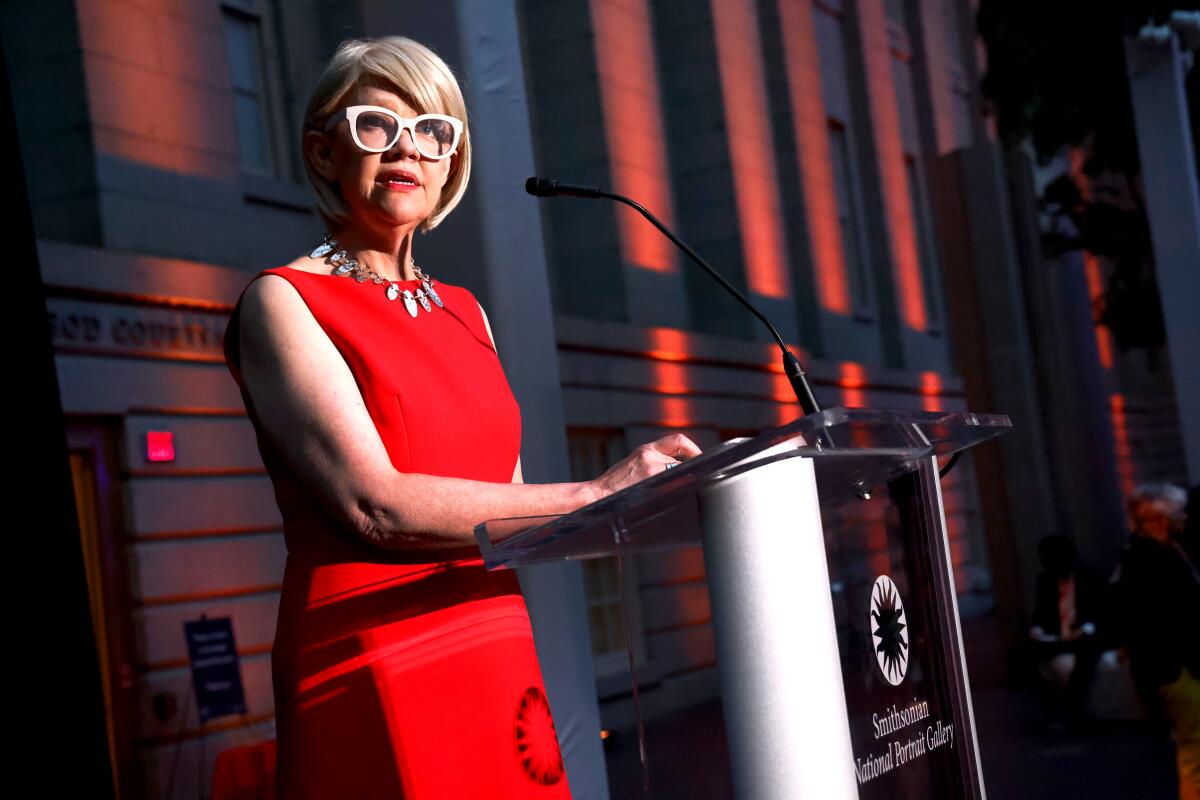Smithsonian rejects Trump’s attempt to fire National Portrait Gallery director

- Share via
The Smithsonian Institution asserted its independence Monday evening in a statement that could be read as a rejection of President Trump’s late-May firing of National Portrait Gallery Director Kim Sajet.
The Smithsonian’s statement said the organization’s secretary, Lonnie G. Bunch, “has the support of the Board of Regents in his authority and management of the Smithsonian.” The statement suggested that all personnel decisions will be made by Bunch, not Trump.
The announcement came after a much-anticipated Board of Regents meeting to discuss the fate of Sajet. The Washington Post had reported that Sajet quietly continued to show up for work each day after Trump’s social media post, which said he was firing Sajet for being “a highly partisan person, and a strong supporter of DEI.”
The Smithsonian’s statement Monday did not explicitly state that Sajet would remain in her position, and the institution did not respond to a Times question on that subject. But the text of the statement is clear in its intent, beginning: “In 1846, the Smithsonian was established by Congress as an independent entity.”
It continues: “Throughout its history, the Smithsonian has been governed and administered by a Board of Regents and a Secretary. The board is entrusted with the governance and independence of the Institution, and the board appoints a Secretary to manage the Institution.”
The Smithsonian’s move comes shortly after the White House proposed a 12% reduction in funding to the Smithsonian in the 2026 budget — including the elimination of funding for the National Museum of the American Latino, which is in the development stages and aims to open on or near the National Mall; and the Anacostia Community Museum, which opened in 1967 and honors Black culture.
The Smithsonian became a target for Trump beginning March 27, when he issued an executive order titled “Restoring truth and sanity to American history.” That order demanded an end to federal funding for exhibitions and programs based on racial themes that “divide Americans.”
“Once widely respected as a symbol of American excellence and a global icon of cultural achievement, the Smithsonian Institution has, in recent years, come under the influence of a divisive, race-centered ideology,” the order read. It also instructed Vice President JD Vance to remove “improper ideology” from the Smithsonian’s 21 museums and the National Zoo in Washington.
The order followed Trump’s ongoing attempts to reshape federal cultural institutions, including his February takeover of the Kennedy Center.
One major difference between the Kennedy Center and the Smithsonian: The Kennedy Center’s board is appointed by the president, but the Smithsonian’s board consists of officials representing all three branches of government. Vance is on the Smithsonian’s Board of Regents, as is Chief Justice John G. Roberts.
“Since its inception, the Smithsonian has set out to be a nonpartisan institution,” the statement Monday read. “As the nation’s museum, the Smithsonian must be a welcoming place of knowledge and discovery for all Americans. The Board of Regents is committed to ensuring that the Smithsonian is a beacon of scholarship free from political or partisan influence, and we recognize that our institution can and must do more to further these foundational values.
“To reinforce our nonpartisan stature, the Board of Regents has directed the Secretary to articulate specific expectations to museum directors and staff regarding content in Smithsonian museums, give directors reasonable time to make any needed changes to ensure unbiased content, and to report back to the Board on progress and any needed personnel changes based on success or lack thereof in making the needed changes.”
More to Read
The biggest entertainment stories
Get our big stories about Hollywood, film, television, music, arts, culture and more right in your inbox as soon as they publish.
You may occasionally receive promotional content from the Los Angeles Times.











